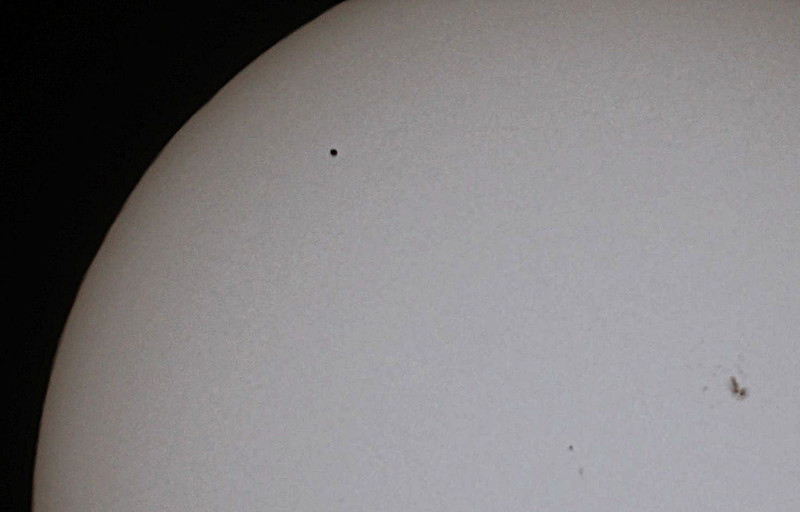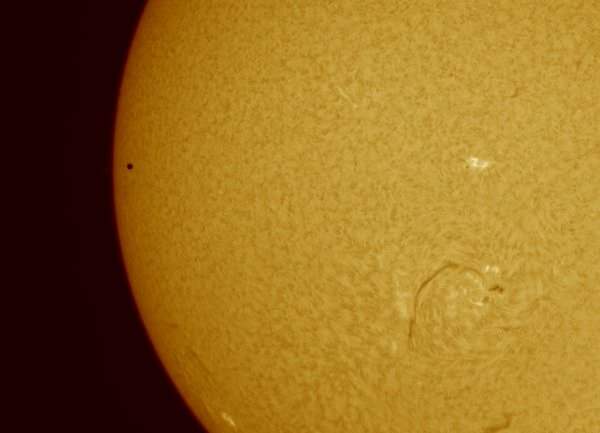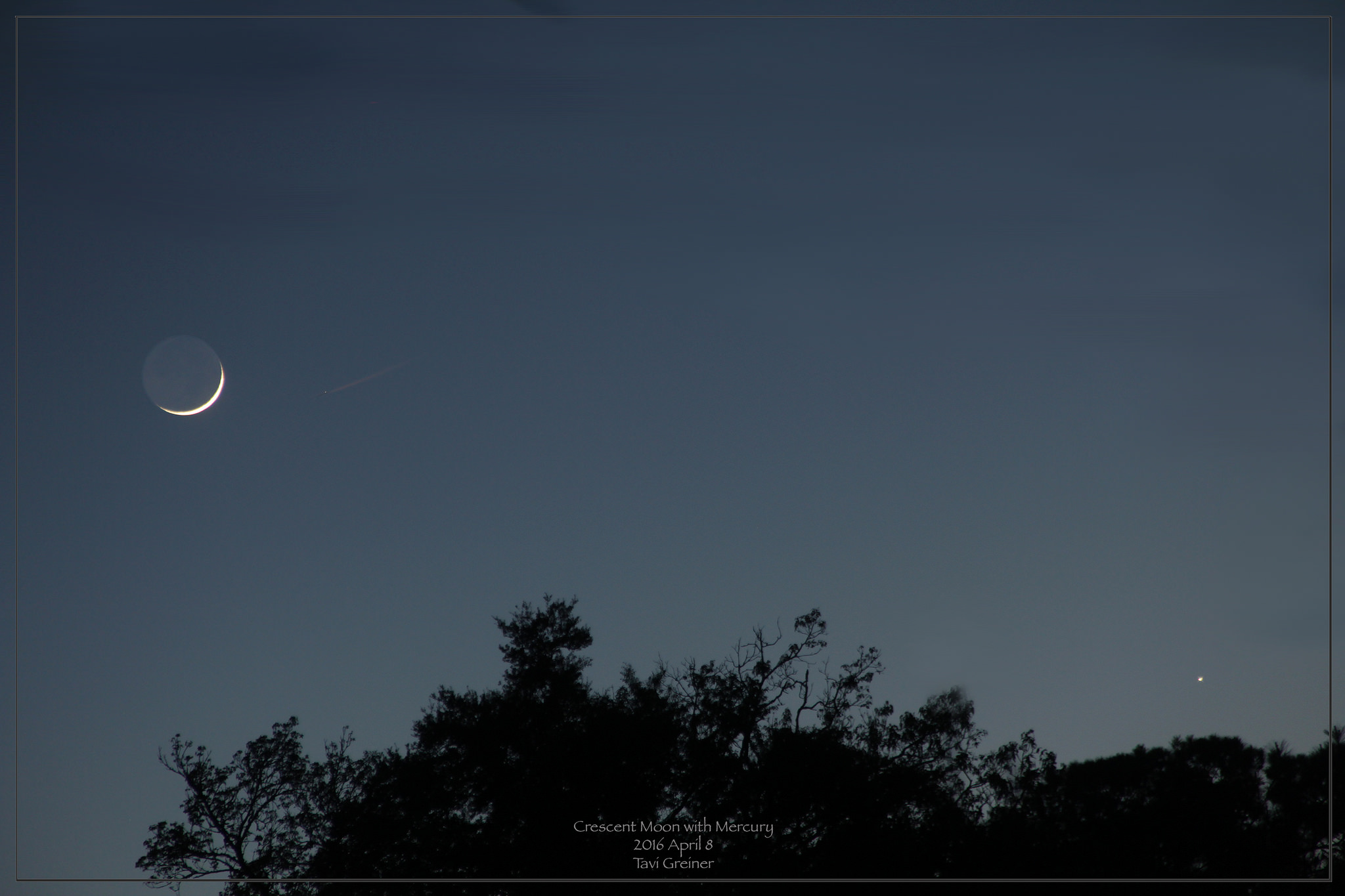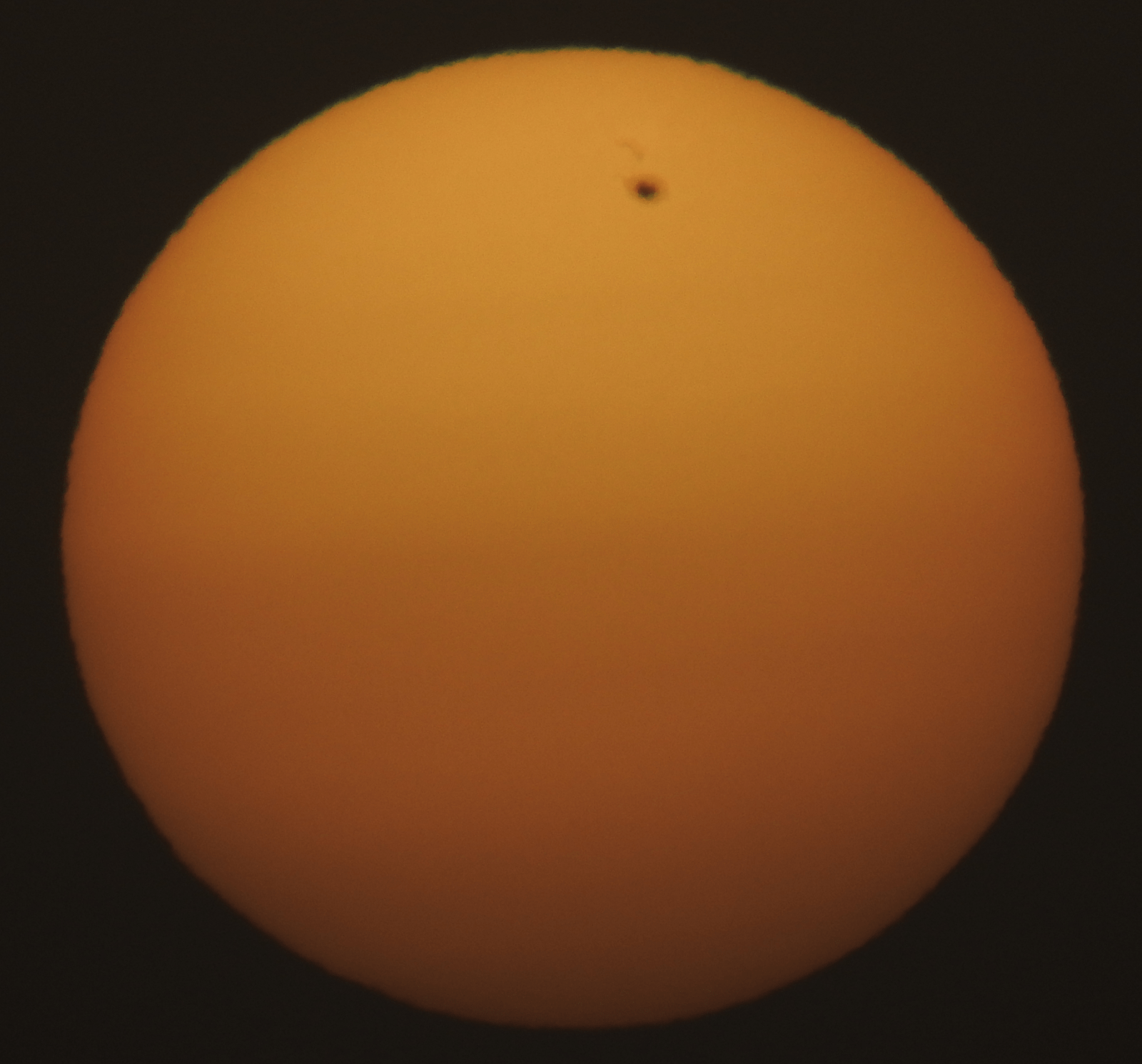One of the finest spectacles in astronomy is to witness the passage of one object in front of another. This can transpire as an eclipse, an occultation, or a rare event known as a planetary transit. We get a shot at seeing just such a singular event next Monday on November 11th, as a transit of Mercury across the face of Sol occurs for the last time this decade.
Continue reading “Our Guide to the November 11th, 2019 Transit of Mercury Across the Sun”What Are Planetary Transits?
Thanks to Ptolemy and his cronies, everyone used to think that the Earth was the center of the Solar System, with the Sun, planets and even the stars orbiting around it on a series of concentric crystal spheres. It was a clever idea, and explained the motions of the planets… sort of.
Then Copernicus figured out in 1543, that the Earth isn’t the centre of the Solar System. In fact, it’s just one planet in a vast Solar System, with objects whirling and whirling around the Sun.
With the structure of the Solar System figured out, and the crystal sphere idea in the garbage, astronomers still had a big unknown: how big is the Solar System?
Was it a few million kilometers across, or hundreds of millions. How big is the Sun? How far away is Venus?
Astronomers needed some kind of cosmic yardstick to measure everything against. Figure out one piece of the puzzle, and then you could measure everything else in relation.
In 1627, Johannes Kepler figured out that the motion of Venus was predictable, and that Venus would pass in front of the Sun in 1631, probably in the afternoon.
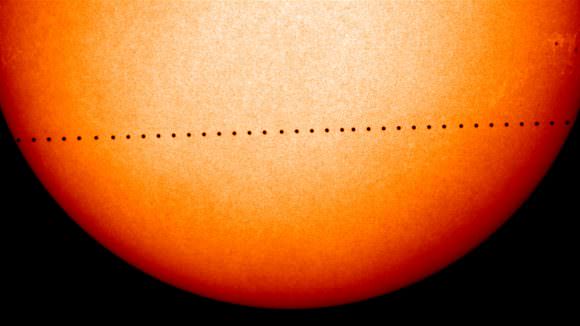
This is known as a “transit” of Venus.
The first crude measurements of Venus’ motion across the Sun were made in 1639 by Jeremiah Horrocks and William Crabtree from two different spots in England. And with these two observations, they were able to calculate the geometry between the Earth, Venus and the Sun.
If you recall all those memories you’re repressing from your high school geometry, once you’ve got an angle and a side of a triangle, you can work out all the other parts of the triangle. Horrocks and Crabtree worked out the distance from the Earth to the Sun within about 2/3rd accuracy. Not bad, considering the fact that astronomers literally had no idea before this point.
Following on from this observation, astronomers returned to their telescopes with each transit of Venus, better refining their calculations, and eventually settling on the current distance of about 150 million kilometers.
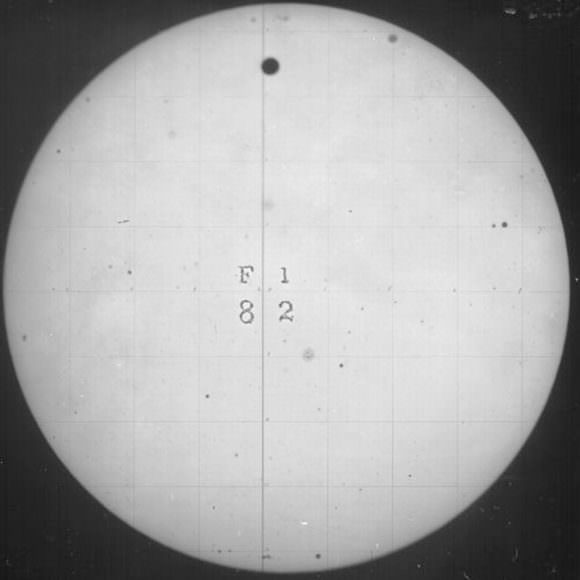
From here on Earth, we can see a few objects pass in front of the Sun: Venus, Mercury and the Moon.
Venus transits are the most rare, happening two times every 108 years or so. Mercury transits happen more often, about a dozen times a century. And a transit of the Moon, also known as a solar eclipse, happens a few times a year, on average.
It’s all a matter of perspective. If you’re standing on the Moon, you might see the Earth pass in front of the Sun. We’d call that a lunar eclipse, while the lunatics would call it an Earth transit.
We can also see transits in other parts of the Solar System, like when moons pass in front of planets. For example, if you have a small telescope, you can see when Jupiter’s larger moons pass in front of the planet from our perspective.
One of the questions you might have, though, is why don’t these transits happen more often. Why don’t we see a Mercury or Venus transit every time they line up with us and the Sun.
This is because the planets aren’t exactly lined up at the same angle towards the Sun. All of the planets are inclined at an angle that takes them above or below the Sun at various points of their orbit.
For example, Venus’ orbit is inclined 3 degrees off the Sun’s equator, while the Earth is inclined 7 degrees. This means that most of the time that Venus and Earth are lined up, Venus is either above or below the Sun.
Are you an ageless vampire, or planning to live a long time in multiple robot bodies, then you’re in luck. In the year 69,163, there’ll be a double transit on the surface of Sun with both Mercury and Venus at the same time. Enjoy that while you contemplate the horror of your existence.
Once we become a true Solar System civilization, there will be even more opportunities for transits. People living on Mars will be able to see Mercury, Venus and even transits of Earth passing in front of the Sun. Neptunians will be bored they can see them so often.
The transit method is one of the ways that astronomers discover planets orbiting other stars. Using a space telescope like Kepler, they survey a portion of the night sky, watching the brightness of thousands of stars. When a planet perfectly passes directly in between us and a star, Kepler detects a drop in brightness.
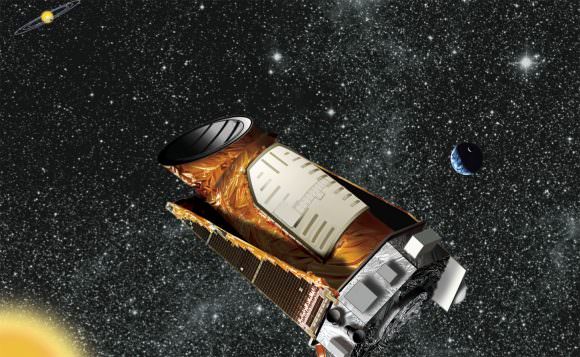
When you think of the geometries involved, it’s amazing this even happens at all. But the Universe is a vast place. Even if only a tiny percentage of star systems are perfectly lined up with us, there are enough to help us discover thousands and thousands of planets.
Kepler has turned up Earth-sized worlds orbiting other stars, some of which are even orbiting in their planet’s habitable zone.
Watching planetary transits is more than just a fun astronomy event, they’re how astronomers figured out the size of the Solar System itself. And now they help us find other planets orbiting other stars.
So, let’s agree to meet up in 2117 to catch the next transit of Venus, and celebrate this amazing event.
Watch Mercury Race Across the Sun, Courtesy of the Big Bear Solar Observatory
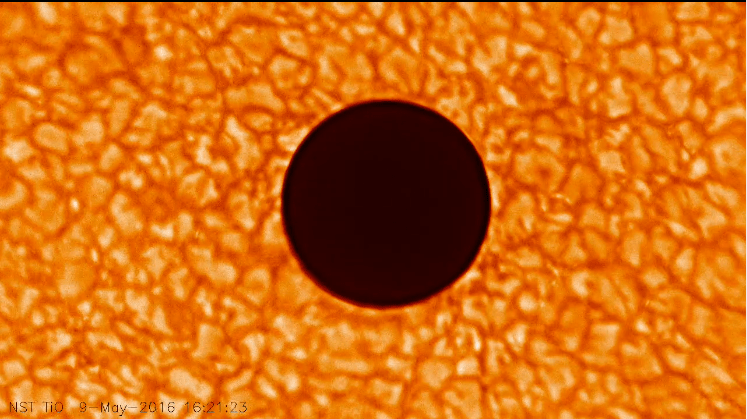
Just. Wow.
Just when we thought we’d seen every amazing image and video sequence from Monday’s transit of Mercury, a new one surfaces that makes our jaw hit the floor.
The folks at the Big Bear Solar Observatory may have just won the internet this week with this amazing high-definition view of Mercury racing across the surface of the Sun:
Remember, Mercury is tiny a world, just 1.4 times the diameter of our Moon, at 4,880 kilometers across. At about 9″ arc seconds across during the transit, it took Mercury seven and a half hours to race across the 30′ (over 180 times the apparent size of Mercury as seen from the Earth) disk of the Sun.
The video has an ethereal three dimensional quality to it, as we seem to race along with the fleeting world. You can see the granulation in the dazzling solar photosphere whiz by in the background.
Big Bear Solar Observatory Telescope Engineer and Chief Observer Claude Plymate explains some of the technical aspects of the captured sequence:
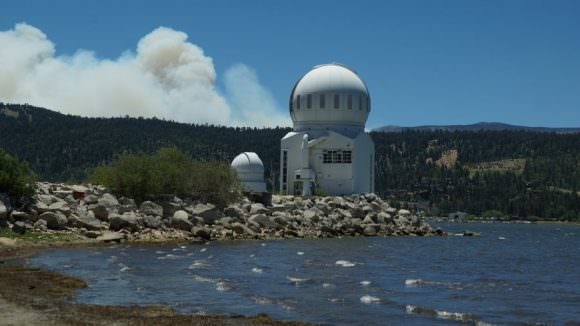
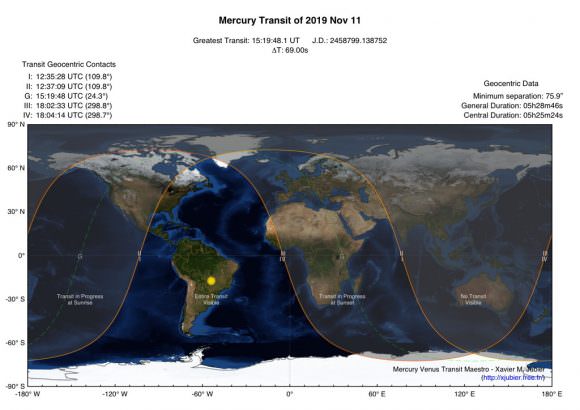
Video used with permission of the BBSO.
The BBSO operation is supported by NJIT, US NSF AGS-1250818, and NASA
NNX13AG14G grants, and the NST operation is partly supported by the Korea
Astronomy and Space Science Institute and Seoul National University and by
the strategic priority research program of CAS with Grant No.
XDB09000000″.
Images of Today’s Transit of Mercury From Around the World
Lead image credit: Brendan Martin.
(Note: Awesome images are being added as they come in!)
Update: Here’s two more amazing videos of yesterday’s transit of Mercury that have come our way. First: double solar transits featuring Mercury, the International Space Station and a low flying plane right here in the skies of good old planet Earth courtesy of (who else?) Thierry Legault:
And here’s one of the very few sequences we’ve seen of the transit with foreground, captured at sunset by Gadi Eidelheit based in Israel:
And finally, check out this amazing (and mesmerizing) animation of Mercury racing across the Sun, courtesy of the Big Bear Solar Observatory!
It’s not every day you get to see a planet pass in front of the Sun.
But today, skywatchers worldwide got to see just that, as diminutive Mercury passed in front of the disk of the Sun as seen from the Earth. This was the first transit of Mercury across the face of the Sun since November 8th, 2006, and the last one until November 11th, 2019. Continue reading “Images of Today’s Transit of Mercury From Around the World”
Prelude to Transit: Catching Mercury Under Dusk Skies
Have you ever seen Mercury? The diminutive innermost world takes the center stage next month, as it transits the Sun as seen from our early perspective on May 9th. This week, we’d like to turn your attention to bashful Mercury’s dusk apparition, which sets up the clockwork celestial gears for this event. Continue reading “Prelude to Transit: Catching Mercury Under Dusk Skies”
Huge Sunspot Turns Earthward
Our seemly placid host star is just full of surprises.
Just one week ago, it looked like we were set to enter the first spotless stretch of 2016, as the Earthward face of Sol presented one lonely sunspot group going ’round the limb, headed towards the solar far side. Continue reading “Huge Sunspot Turns Earthward”
Transit
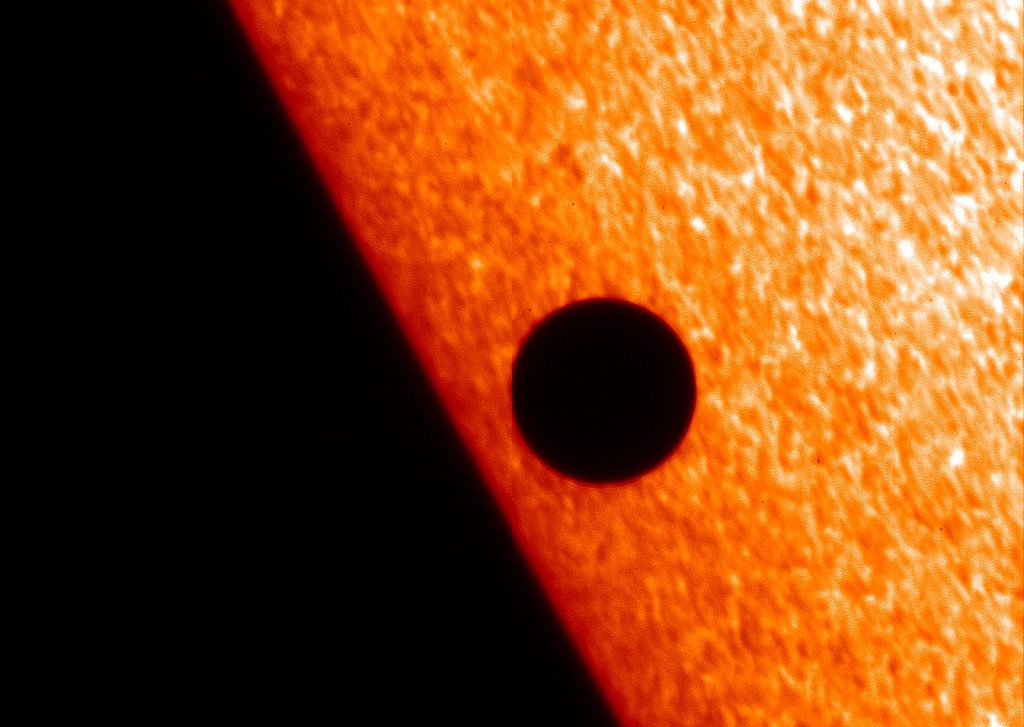
[/caption]
Although the word “transit” can have many meanings, here on Universe Today, we’re talking about astronomical transits. This is where one object in space moves directly in front of another, partly obscuring it from view.
The most famous example of an astronomical transit is a solar eclipse. From our vantage point on Earth, the Moon appears to pass directly in front of the Sun, obscuring it, and darkening the sky. When seen from space, the Moon casts a shadow on the surface of the Earth; only people within that shadowed area actually see the transit.
In order to have a transit, you need to have a closer object, a more distant object, and then an observer. When all three objects are lined up in a straight line, you’ll get a transit. There can be transits of Mercury and Venus across the surface of the Sun, or a transit of Earth across the Sun, seen from Jupiter. We can also see the transit of moons across the surface of their planets. Jupiter often has moons transiting in front of it.
Astronomers use the transit technique to discover extrasolar planets orbiting other stars. When a planet passes in front of a star, it dims the light from the star slightly. And then the star brightens again as the planet moves away. By carefully measuring the brightness of the star, astronomers are able to detect if they have planets orbiting them.
Transits are also helpful for studying the atmospheres of objects in the Solar System. Astronomers discovered that Pluto has a tenuous atmosphere by studying how it dimmed the light from a more distant star. As Pluto began transiting in front of the star, its atmosphere partly obscured the star, changing the amount of light observed. Astronomers were then able to work out the chemicals in Pluto’s atmosphere.
The next transit of Mercury will occur in 2016, and the next transit of Venus is scheduled to occur in 2012.
We have written many articles about astronomical transit for Universe Today. Here’s an article about the transit of Mercury, and here’s an article about the transit of Venus.
If you’d like more info about Astronomical Transit, check out NASA Homepage, and here’s a link to NASA’s Solar System Simulator.
We’ve also recorded related episodes of Astronomy Cast about the Eclipse. Listen here, Episode 160: Eclipses.
Source: Wikipedia

